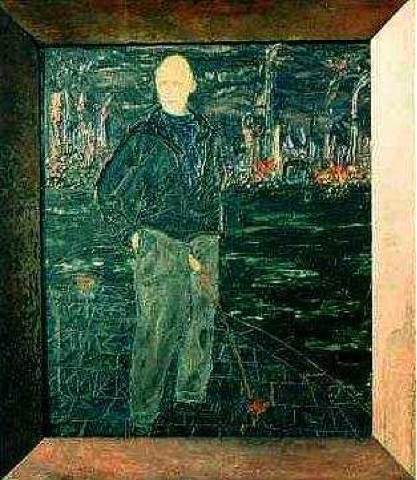I have had a massive company-crush on DV8 for well over a year, since a friend first shared a clip of this show in its Australian incarnation. As a result, I went into this show with huge expectations and the desire to be tested intellectually and visually. The set as we first see it is a large, open space prepared for intricate physical movement with parquet floors. There is a wall close to the downstage side with mirrors on it, and doors lining the sides of the room on stage. Pulling no punches, creator Lloyd Newson begins by cracking in on the audience, largely visible in the mirror on stage, about moral superiority to the Taliban. This direct address sets the tone for the ensuing 120 minutes of questioning our stance (or lack thereof) when it comes to Western cultures interacting with other cultures, most specifically muslims. The show challenges us to look at our own beliefs, and to question why we have come to a place of moral relativism, where acts we view as completely heinous are okay for others, because of their "culture".
At its root is a deep belief in the univerality of human existence; that there are certain basic rights that all people deserve to have access to, and that for someone to remove those rights in the name of religion or culture is not acceptable. The intellectual debate is fiery, and is underscored by intense physical choreography which echoes in space and movement the essence of what a character is saying or doing, to great effect. When a politician is dancing around an issue, the actor is literally fancy-footing around the stage. When a woman is preaching from her high horse, she speaks the entire monologue from atop another actor, who moves her around as if he was her chair.
Oddly, despite the desecriptions I have stated above, it does not feel like it gives us an answer...rather it asks A LOT of questions and at least in my case, sparked some serious discussion about how we should handle these things and what is acceptable.
Overall, the effect was visually stunning, underscoring intense intellectual debate, and left me thinking. Isn't that what we want theatre to do?
At its root is a deep belief in the univerality of human existence; that there are certain basic rights that all people deserve to have access to, and that for someone to remove those rights in the name of religion or culture is not acceptable. The intellectual debate is fiery, and is underscored by intense physical choreography which echoes in space and movement the essence of what a character is saying or doing, to great effect. When a politician is dancing around an issue, the actor is literally fancy-footing around the stage. When a woman is preaching from her high horse, she speaks the entire monologue from atop another actor, who moves her around as if he was her chair.
Oddly, despite the desecriptions I have stated above, it does not feel like it gives us an answer...rather it asks A LOT of questions and at least in my case, sparked some serious discussion about how we should handle these things and what is acceptable.
Overall, the effect was visually stunning, underscoring intense intellectual debate, and left me thinking. Isn't that what we want theatre to do?
